#sustainable fashion garment labels
Explore tagged Tumblr posts
Text
#Gaatha aims to bridge the gap between High-End Designer wear and Fast Fashion Labels. We strive to make designer wear affordable and accessi#Our collections are based on inspirations and not trends. We love using handlooms and natural fabrics that improve with every wash. Our han#We aim to create garments that are long-lasting#sustainable#and stay relevant over the years to come.#The gaatha is about delivering timeless and seasonless fashion. We believe in mindful production#and everything we deliver is made to order.The Designs have an offbeat and trendy look with impeccable quality and finish at very affordabl#styles are available in all sizes from s/36 to 3xl/46. Pure fabric with hand works at affordable prices. For wholesale order call us at 882#ataleoftradition#ataleoftraditions
0 notes
Text
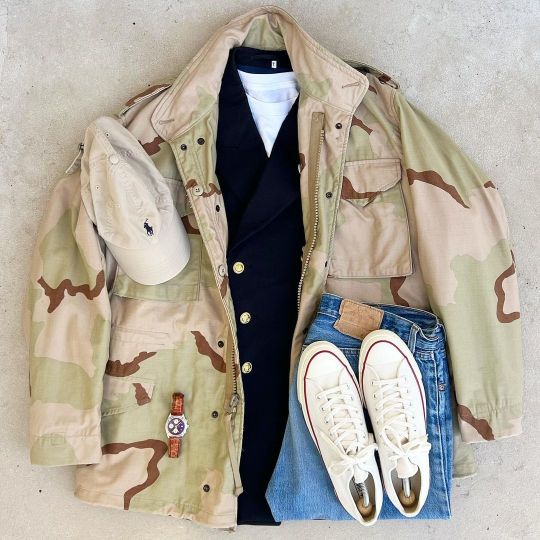
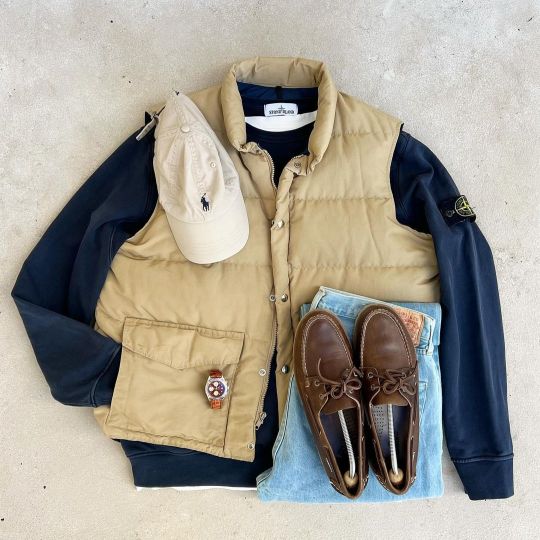
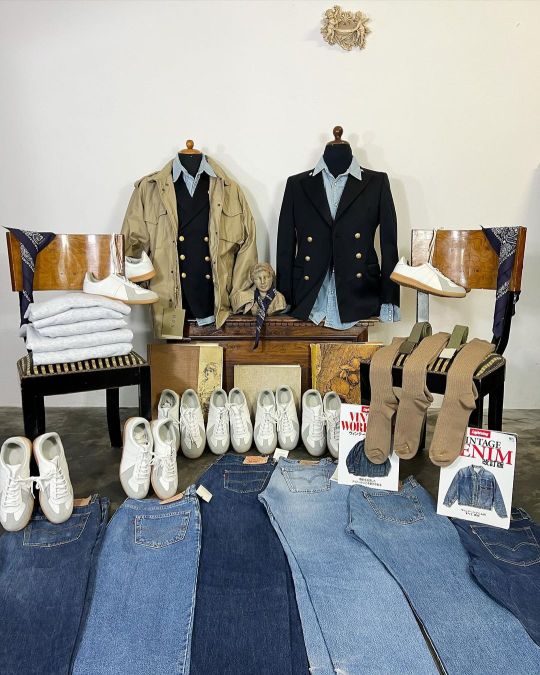
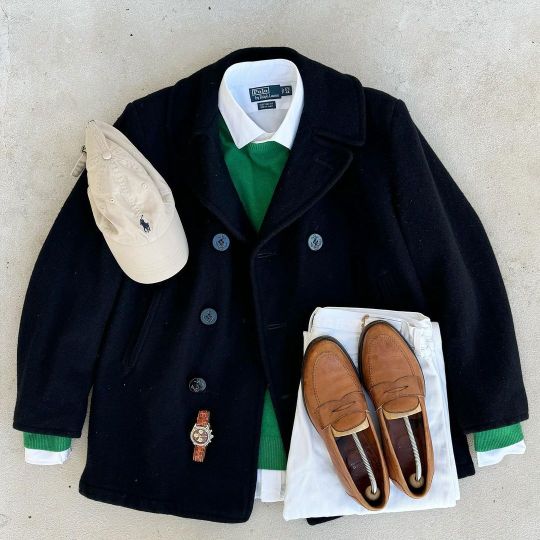
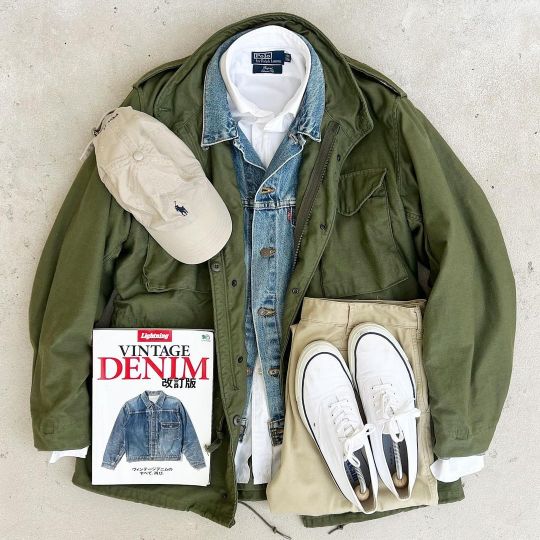
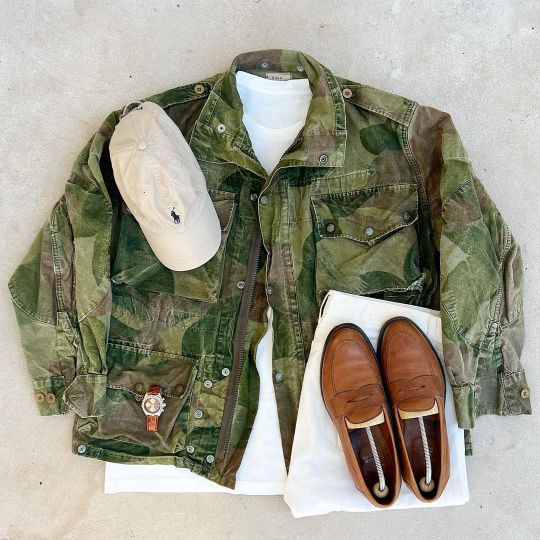

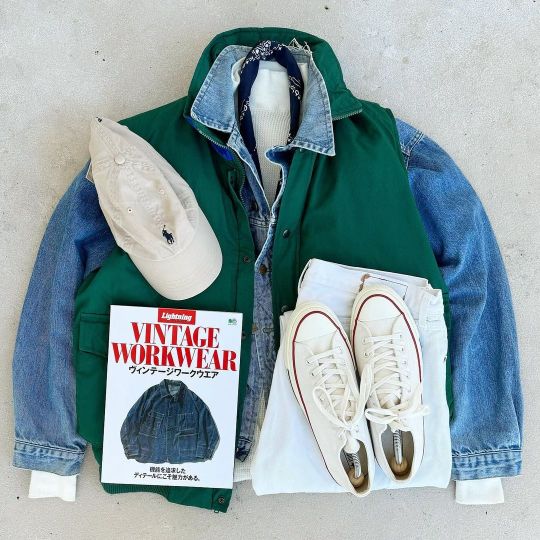
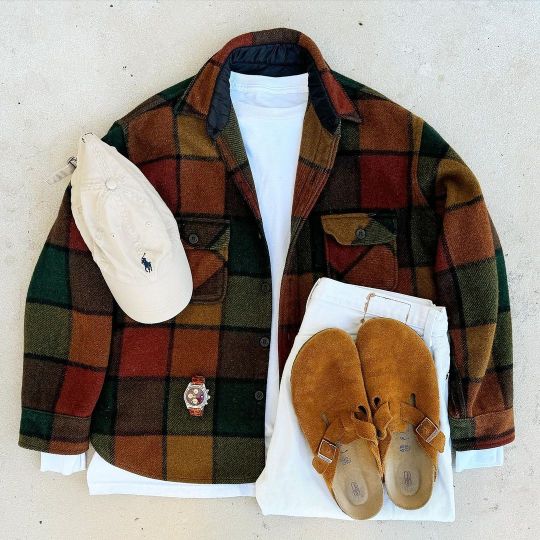

Introducing: Mr. Archive
What better way to kickstart 2024 than with one the most beautifully curated, styled and fair-priced vintage stores out there?
Mr. Archive has been one of my go-to places the last few months, be it for visual inspiration on their instagram profile or the browse some of the most interesting pieces around. To be fair, after 15 years of working in this industry is getting more and more difficult for me to find garments and brands that are truly exciting and fresh. If on top of that we take into account the price point of some of these labels, many of which produce in Portugal with accessible costs, my enthusiasm dims even further.
I’ve always been passionate about the universe of vintage and pre worn garments, but this love has been fueled in recent years by the appearance of highly specialized shops that seem to be perfectly in tune with my personal style. I’ve had the chance to chat with Matteo, the mastermind behind Mr. Archive to learn more about this outstanding project.
BF: I came across Mr. Archive fairly recently and I must say that it definitely hit a soft spot within the range of vintage providers currently on my radar. How long have you been in business? What drove you to create it?
Matteo: I'm passionate about my job, believe I have a somewhat general knowledge of the fashion world, but about 4 years ago, I got fascinated by this industry, even though I already knew it. I come from a family that has always worked in the clothing industry.
BF: For me, your selection is perfectly curated, bringing a mix of military and navy-inspired garments, with a twist of Americana. Is this an extension of your own style and taste, or is it more business-oriented?
Matteo: What I propose is all based on my personal taste; I create outfits on the spot, drawing inspiration from magazines, newspapers, etc., and then I elaborate and create. My mom is an artist, and I think I took inspiration from her.
BF: Vintage has always inspired me ever since I got into fashion roughly 15 years ago. There's just something distinctive about the fabrics and the history behind each garment that you can not replicate with new items. How/where do you source your amazing selection?
Matteo: My pieces come from warehouses worldwide; I'm constantly looking for new things, and that's the wonderful thing about my job! I have strong trust in my suppliers!
BF: With sustainability being the word of order when it comes to fashion, have you noticed an increase in demand for pre-owned garments? Do you think part of the solution can be provided by vintage?
Matteo: Recently, there has been an increase in the purchase of vintage and second-hand clothing items. To be honest, I believe that a few years ago, not many people knew about this world, but now it's expanding and captivating even those who knew little about it.
BF: I noticed you have a small capsule of garments carrying your own label, namely selvedge denim and accessories. What's the story behind those? Can we expect more designs in the future?
Matteo: I won't deny that creating my own clothing line would be a great personal satisfaction, a significant growth. I recently created a small line, "MRARCHIVE," currently composed of jackets, pants, and hats. One day, I'd like to expand, but I still have much to learn and study.
BF: Any tips or advice you wish to leave for those more reluctant to explore the world of previously owned items? It's still somewhat taboo for some people.
For many people, this world is still a taboo; they're still stuck in the thought of "they're used clothes." What I think is that one should see the story and originality behind each piece to appreciate its value, both from a historical and an aesthetic perspective. Sometimes, I compare some clothing items to paintings—they should be framed.
You can find Mr. Archive here.
#Mr. Archive#menswear#men's fashion#vintage#pre-owned#style#fashion#inspiration#beyond fabric#men's style#collection#lookbook#store#shop responsibility#military#navy
282 notes
·
View notes
Text
Where to buy lingerie?🥀 Girlhood Tips #1 🥀
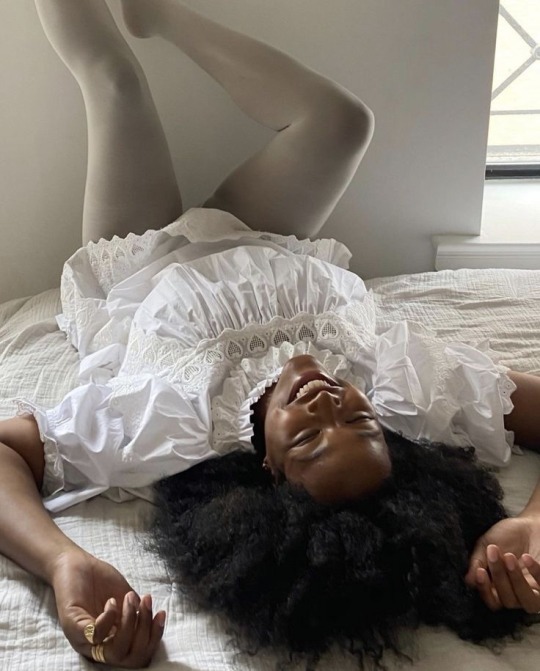
Whatever happened to wearing beautiful undergarments while prancing around our rooms? One of the staples of being youthful is now seemingly dead and gone. I love to whine down in my fabulous undies and sway to my favorite songs.
Hopefully we can bring this tradition back! To help kick start this, I’ve compiled a list of size inclusive lingerie brands from cheapest to more pricier items.
(If you guys want more options or help please let me know! I'm a chronic online shopper😭)
$
(1-20 USD per set/item)
AliExpress
Ali express stores is the absolute cheapest option for both price and size…yall already know it's fast fashion most times but some reputable brands from them are (IEUHIA, Wriufred, ChenFa Store, and Aiangelaquin official store)
Not much to elaborate here but they usually have a XXS-XXL
Cannot link the stores but just search up by the shop name.
FreetheFrillies
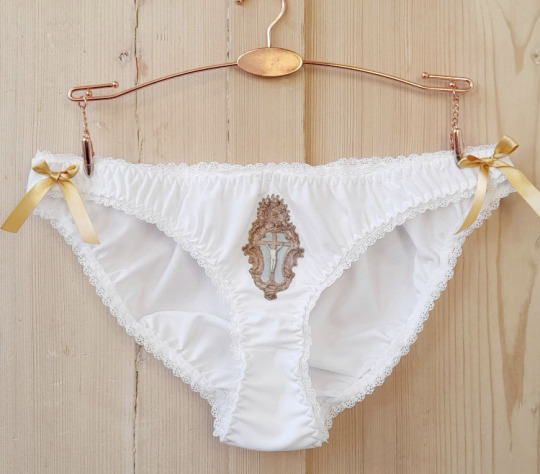
Handmade undergarments shop based out of the United Kingdom, features both religious and Victorian imagery on their clothing.
Sustainably at a reasonable price is one of their main concerns and they take pride in hand sewing each and every one of their items before they are shipped to you!
Material includes cotton, satin and elastics.
Sizes ranges from UK8/10 to UK16/18
ShopCryBunni
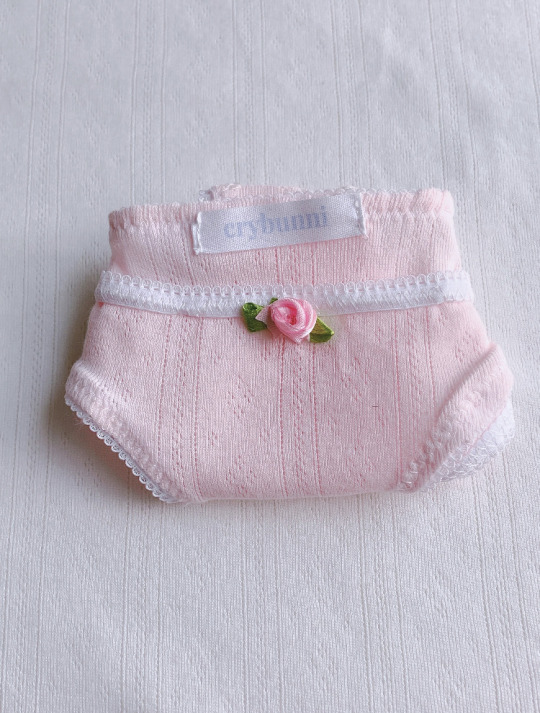
Small indie early brand ran by a student in Salt Lake, Utah! Very simple designs usually solid color or floral garments with a small bow or a flower on top. Very affordable.
Shipping is quick and punctual usually taking 2-3 days on average inside of the US. Internal customers can take up to 2-3weeks.
Sizes range from xxs-L US standard and does not make custom sizing outside of that at the moment.
$$
(30-70 USD per set/item)
AKAMYDINH
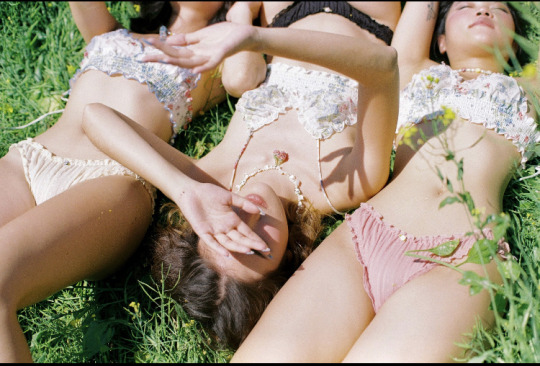
Small fashion label based in Saigon, Vietnam. They repurpose factory scraps and excess to make their brand as sustainable and ethical as possible! Their lingerie is simple solid colored bikini style sets with a frill finish. Occasionally with a cherry, bow, or floral embellishment.
XXS-XXL is the sizes offered with a additional custom sizing upon request!
70% of their items are made to order while the other 30% is made by fairly paid seamstresses.
Quick and helpful customer service with an outstanding 4.8 stars. Definitely recommend if you’re looking for simple yet ethical clothing.
Besos Biquinis
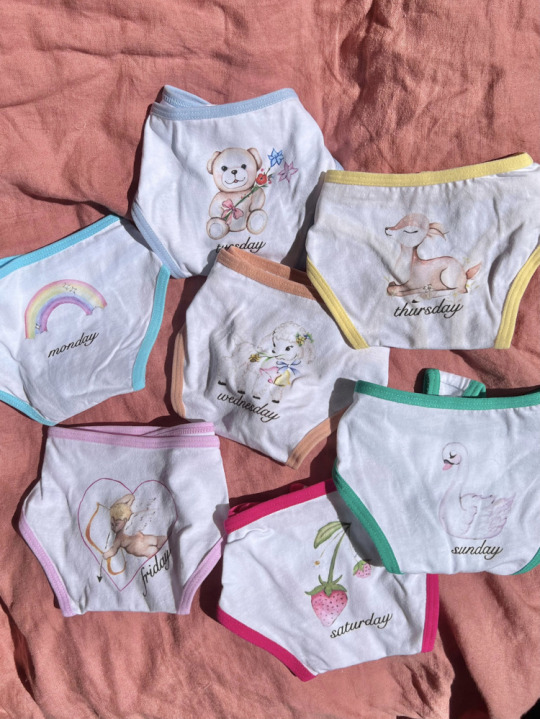
Famous tik tok brand that is known for their super cute vintage day of the week panties packs!
Their other items are more expensive like the 100+ range but most of their undies are $40-70 USD
Sizining is XS to XL usually. However, only going up to L in bottoms. Biggest cup size is C-DD cup without band specifics.
Unsure about custom sizing but I’d assume not? It’s always worth it to email! :)
Cute packaging and great customers service from what I’ve hear they also send out PRs soooo….if you have a big following definitely worth checking them out
ShesArMermaidCat
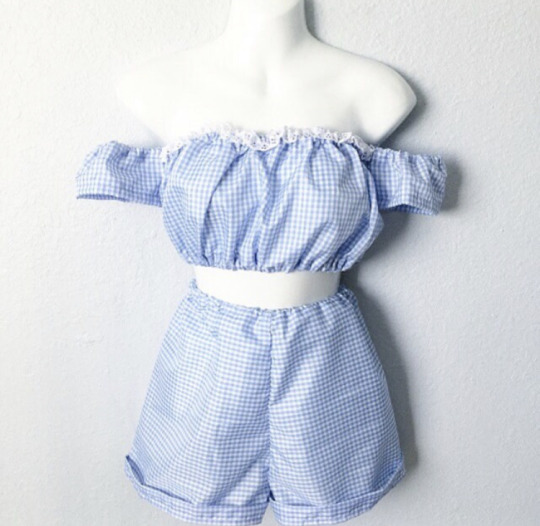
An absolute classic in the coquette community! She makes Dolores haze inspired garments with bloomers and cupcake style tops. The sets are usually solid colored or gingham! Perfect for the more modest Americana girlies.
She’s a gem and has amazing communication. You can also request a custom piece or size.
Each and every set is made to order and is handmade right out of California. 10/10 definitely recommend this shop for every Lolita!
FeelingVaugeVintage
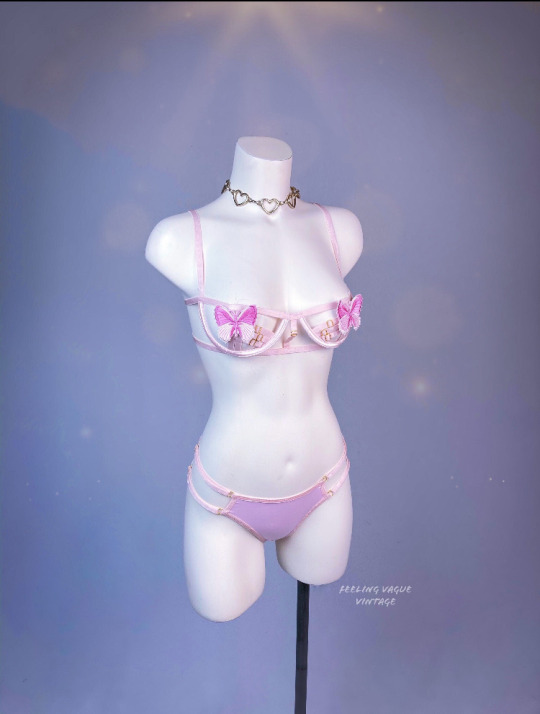
Exotic dancer style lingerie brand. This is for the girls who are secy workers or love that style of lingerie. Much more form fitting, skimpy and trashy which I love and I know there's girls who love it too!
Handmade brand based off of esty who is always running sales. Currently offer 20% off when you buy two and 30% off when you buy three! Great deal an already cheap brand.
Sizing is a standard S-L but with any handmade brand just message the seller and ask if they can make a custom size just for you ;) they are a very sweet and punctual seller and they have well over 16,000 sales and a 4.8 star! Definitely recommend!
PurrfectPineapples
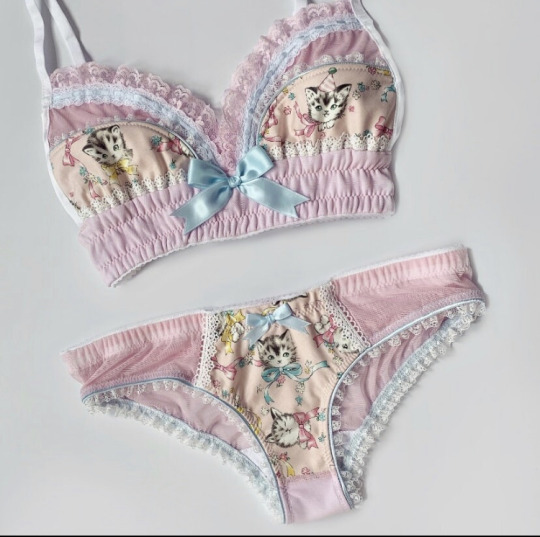
Cruelty free lingerie brand based out of Chicago, Illinois. The underwear is all pinup, vintage rockefeller style. Using vintage prints and designs. The embellishments are simple and usually lace or bows. Most sets include bra, panties, and a garter belt for about 60ish USD which is amazing tbh!
This brand is handmade to order and does take custom orders/sizing. The wait time is anywhere from 2 weeks to a month at most for an order.
Great customer services and many ways to pay including klarna payment plans.
(80-100+ per set/item)
$$$
Malicious designs

Handmade sustainable brand that sells tons of babydoll and lolita style clothes. This business is ran by Sheana Hinesley and is a fairly popular place to shop both on Depop and Etsy! They use standard sizing US S - L and is open to doing custom sizing
I do own an outfit for them and well made and I do think it’s worth the price! Fair warning is that shipping takes. 3 months to a year….. And at times their communication is less than the standard.
Would mainly suggest either buying second hand or through their Etsy for the best experience possible!
International shipping plus esty allows payment plans soooooo
Buttress and snatch.
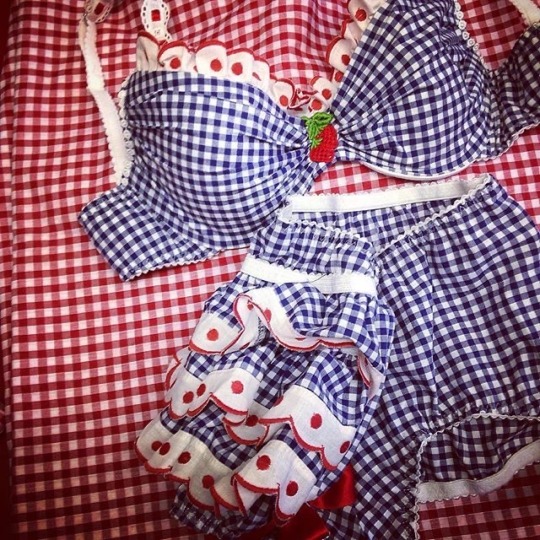
A handmade and sustainable brand that sells 60's american style lingerie with beautiful craftsmanship. Most of their items have bows, rose, or lace embellishments which are a must for any lolita! They are based in the UK with international shipping. The cup sizes goes all away up to a. 36E/40DD and the bottoms up to a size UK18!
For the more adultish sexy girls they do have see through and fully lace garments. For the girls love the environment they have a line of items that are all made out of 100% recycled cotton shirts! How cool.
The brand also has great customer services and can do custom sizing if needed. If you’re ever worried about size conversion please shoot them an email.
They also have a one cup bra for support for anyone that needs that which I think is absolutely amazing. Definitely worth a look.
Love for lemons 🍋
Extremely well known sister brand of Victoria’s Secret that has absolute gorgeous pieces. Their pieces are packed with laces, frills, and florals! Perfect for a more mature, classy coquette.
Unfortunately not as size or comfort inclusive as our last pick but they do have sizes ranging from. XXS-2X and the cups can go up to a big as 38DDD but unfortunately that’s usually for select items such as teddies :/
One the bright side items such as garters, shoes, skirts, and swimwear is available compared to other brands. International shipping is available as well as sales and discounts. P.s. there’s a sale going on for $30 USD on select items.
Good customer services with no custom sizing however you should always mail before buying if unsure! I’d still pick lemons over Victoria’s any day! Tea.
#coquette#coquette aesthetic#hyper feminine#lana del rey#lana del ray aka lizzy grant#girlblogging#dollette#girlhood#coquette community#it girl#femme fatale#girlhood tips#gaslight gatekeep girlboss#girl blog#2014 revival#2014 tumblr#the virgin suicides#girlhood interrupted#marina and the diamonds#hell is a teenage girl#dark femininity
151 notes
·
View notes
Text
something about that "most expensive item of clothing" poll (and, in particular, the post responding to the many tags about $100‐$200 clothes) has been bugging me, and I finally figured out what it is:
you are on the Reject Fast Fashion Buy Sustainable Clothing And Support Small Craftspeople To The Best Of Your Ability website. how much do you think clothing costs? do you not understand the value of labor?
Obviously big fashion labels will mark up their goods to turn a huge profit (basically all labels will), but when you're looking at ethical/sustainable new clothing, you'll see the same prices for similar items. what you need to understand is that the company making those products is turning significantly less profit than the ~designer~ brand. you cannot avoid the higher costs!! growing the fiber takes labor and resources! manufacturing the textiles takes labor and materials! designing and patterning the garments takes labor and skill! sewing the garments take labor and skill and materials! the workers at *every single step* need to be paid a living wage, and all of the processes in general - from growing the fiber to dyeing the textile - take longer and cost more than the industry standard demands. It makes the clothes expensive!!
one of the biggest problems with fast fashion imo is that the obscene level of exploitation of people and resources has allowed giant corporations to drive prices so fucking low that no one understands the value of their *own* labor, let alone the labor of a seamstress they can't see in a factory they've never heard of getting paid 5 cents an hour to work her fingers to the bone finishing a $20 t-shirt.
Bernadette Banner explained once the reason she doesn't take commissions or sew clothing for other people: To use the materials she uses (high quality natural fibers) plus the hours and hours and hours of labor at a living wage, and then a small mark-up to turn any kind of profit, each piece would cost literally thousands of dollars. This shit is fucking expensive.
so anyway. yes, $400 is a lot of money for a pair of sweatpants, but for people who are interested in supporting sustainable fashion brands and who have the means to do so, $100-$200 is beyond reasonable for basically any given item, and the people who buy those clothes certainly aren't your enemy for it.
#textiles#fast fashion#anyway. this is one of those 'i dont think you understand the difference between a million and a billion' situations lol#sustainable clothing
78 notes
·
View notes
Text
For a number of years, I've been thinking about what an alternative to fast fashion might look like that wouldn't rely on companies to decide suddenly to stop selling us garbage or government regulators to actually make rules with teeth on planned obsolescence and externalities.
Obviously the goals would be to have the whole process from field to closet to waste degradation be environmentally sustainable and rely on fair, well-compensated labor.
The items themselves would need to be designed to last for a very long time: socks and underwear for a minimum of five years; bras for a minimum of ten; leggings, undershirts, t-shirts, and shells for a minimum of five hard-wearing years or ten light-wearing years; and outerwear, bags, and accessories for decades. Wool and leather coats, properly maintained, should be able to be passed down to your grandchildren. Shoes would vary greatly based on the exact material and purpose, but would be designed with the same durability considerations.
The fit should be unique to the person, and tailored to fit their exact proportions, body fat, and hard-wearing points. Therefore, items would not be labeled by size at all, but generally shown in different schematics to demonstrate what the item would be tailored to look like on different body types. Instead of just designing items for straight sizes and items for plus sizes, make general design plans that are easily adjusted to be shrunk or hemmed in some places, reinforced in others, and let out or expanded in others.
How the person wants to wear the item should also be taken into account: is this going to be a neck scarf or headscarf? Is this sleeveless dress going to be worn as a sundress or over a shell? Is this person going to be wearing breast forms or binding? Does this person use a wheelchair and if so, what are the touch points/hard-wearing points based on their actual chair? Etc.
Lifestyle should be taken into account: what is this particular item going to be used for? Are you hiking? Climbing mountains? Working on a farm? Working in an office or courtroom? Working retail or in a restaurant? Lounging with friends in your home? Playing sports? Wrangling small children? What do you need to do in your clothes? And what if you need something that will get your kids to daycare, yourself to your office day job, to a post-work workout or date with friends, and then to moonlighting as a cashier at a pizza place? (This is a real example of one of my friends, btw.)
It should not only be possible to move comfortably in the clothes to be able to do everything you want to do, but should be possible to easily modify the look to allow for multipurpose use with a simple reconfiguring of the garment and/or changing up the accessories. Pockets and ways to adjust the clothing for different external factors like temperature, weather, and time of day would be a must for basic items like button-up shirts, dresses, pants, and skirts. Additionally, sensory aspects should be taken into account as well - no itchy tags or ill-placed seaming, and certainly no plastic seam support tape or interfacing to make up for poor base materials. How the item wears over time should be considered, so that it starts out feeling good and wears into being extra comfortable and lived-in.
Simply put: the clothes need to be designed for practicality and comfort.
To the greatest extent possible, it should be easy to do immediate care for the clothes at home - stain removal, washing, drying, and even basic mending. However, for items with more technical maintenance and/or repairs, that service should be provided in-house to allow for more durability and control over sustainable practices for things that can't simply be washed, like wool coats. Repairability would need to be considered for common hard-wearing areas; extra panels in the inner thigh, elbow, knee, and armpit areas to help make the garment easily repairable to look as good as new would be things to consider.
Similarly, the look and style should be considered for the intended duration of the item. If it needs to look elegant for twenty-five years, then it needs to be designed with a classic look that will last the full time. Things like consistently flattering lines, colors, and patterns that tend to stay in fashion should be prioritized, with the ability to easily add or subtract embellishments to update the base garments. Accessories should be designed with a much greater range of colors and styles to allow for outfit variation and customization.
And the idea I keep coming back to is of a subscription styling, tailoring, mending, and recycling service with a lot of different plans and multiple payment structures to offset the cost of all of this. Realistically, the Vimes boots theory of economics is well in effect here. A dress that could replace thirty cheap fast-fashion items but will cost $5000 isn't going to happen for anyone who isn't exceptionally wealthy, even if over time it actually costs the individual less. The only real way to do this would be to treat it like an asset and structure payment accordingly. In the meantime, having a staff to handle maintenance of the items (such as repairs, style updates, and refitting as the person's body changes) would help to improve the sustainability of it as a business.
Anyway I'm not a business major, but I'm curious about what y'all think of that approach? Is this something you'd consider?
104 notes
·
View notes
Text
Sign the petition to demand the creation of a new international law requiring fast-fashion garments to come with a statement of the human cost and environmental harm caused by their creation.
We all know fast fashion is bad for the planet - slave labor, environmental waste, air and water pollution, and unsustainable practices are just a few of the ways they impact our planet, our health and our lives. To date, the fast fashion industry is the 2nd largest consumer of water and is single-handedly responsible for 10% of global carbon emissions (that's more than all international flights and maritime shipping across a year combined). Even the simple act of washing these clothes releases 500,000 tons of microfibers into the ocean each year - that's equal to 50,000 plastic bottles. Fast-fashion is the 3rd leading cause of the climate crises we face, yet is rarely addressed.
Knowing these stats is one thing, and understanding them is important. Being aware of them is somewhat informative. But as long as we keep turning a blind eye to the issue, the stats are only going to get worse, and nothing will change for the better. Ignoring the issue or brushing it under the rug won't help anything. So what if we could see the real-world damage done by each of the garments we buy?
In the same way that cigarette packets have shown the harm their products do to our bodies ("SMOKING KILLS", lung cancer visualizations, etc.), what if fast fashion manufacturers & retailers had to show the harm their products do to our planet?
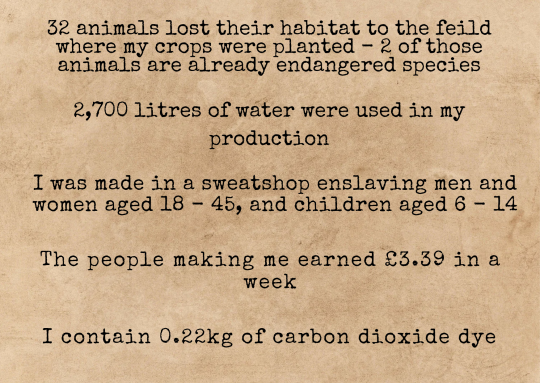
[Image ID: A type-writer font has been used on a brown craft paper background. The text reads: "32 animals lost their habitat to the field where my crops were planted - 2 of those animals are already endangered species. 2,700 litres of water were used in my production. I was made in a sweatshop enslaving men and women aged 16 - 45, and children aged 6 - 14. I contain 0.22kg of carbon dioxide dye." End ID.]
This is a mock-up of a label / statement for a single T-shirt, with researched statistics and educated estimates for the information I couldn't find a calculated answer for.
Now imagine labels / statements like this for every single piece of clothing: how many toxic chemicals are in those new jeans? How many litres of water did that shirt take to make? How many animals were skinned to make those cute fur-trimmed boots? How many children made that jumper? How many people were forcibly removed from their homes, so production companies could plant crops to grow the materials used in clothes manufacturing? How many families were evicted for no reason other than corporate greed? How many trees were cut down? How many animals were displaced or killed?
Would you really want to buy those items of clothing if the answers to those questions were staring you in the face?
If this information was stated in clear, accessible ways on both the website and the ticket on the actual garment, this would dramatically reduce the number of people buying fast fashion items. It would also reduce the profits being made by fast fashion companies, and could lead to many of them being forced to choose between changing and becoming sustainable, eco-froendly and ethical brands, or shutting down due to being boycotted.
Who would really want to knowingly buy things that are made by slaves, or which cost a family their home, or which contributed to deforestation? Who would continue to buy fast fashion items knowing this is the damage caused by them, when sustainable alternatives are an option?
Whether it's second-hand fashion at affordable prices, or investing more money in sustainable products which were made with high ethical standards and which cost more money due to the fact their price accounts for the time it took a person to make that item... we can say for certain that sustainable shopping is going to become much more popular if people know how important that change is. Sustainable items last much longer than fast-fashion items, which by design are created to self-destruct, as they are made to be worn a few times and then discarded in order to be replaced by the next trend's items - and as trends speed up, these items become weaker and weaker. This then leads to people spending more money in order to keep up with the newest trends, and to keep replacing clothes they throw out after a few washes.
In contrast, buying sustainable items which are designed to last years means people won't have to spend money on new clothes every few weeks, which means they'll ultimately save money in the long term and actually be able to afford those pricier items which will last much, much longer.
Now, despite the amount of harm the fast-fashion industry causes to people and the environment, the last thing we should be doing is getting angry at those who continue to buy them. Being the target of anger doesn't make large populations change their behaviour - even a cursory look through history books will tell us that much. Neither does being the target of resentment or blame.
But guilt? Shame? Those are two of the most powerful emotions to magnify when you want change to happen in waves.
And frankly, if people feel ashamed of buying something, or if buying something makes them feel guilty... they're going to stop buying it.
Those aren't the only emotions that should be felt, though. Because only feeling guilt and shame leads to feeling hopeless, scared, anxious and depressed. And we don't want that. No matter how bad things get... we don't want that.
The only other emotions to provoke are hope and pride.
If there's no hope for the future, how can anyone be expected to imagine a better one?
You wouldn't think it, what with all the climate crises and disasters we experience around the world and the total lack of commitment made by billionaires, multimillion-dollar companies and corporations and politicians.
But it's true. Scientists in Scotland have discovered bacteria which eat plastic and speed up the decomposition of it. ‘Ecocide’ is now punishable by law. Some countries within the EU are already close to meeting their 2030 goals years ahead of schedule! Thanks to scientists and small, individual changes made on a massive scale by ordinary people who are making small adjustments to our everyday choices, we can and are healing most of the ozone layer before 2050. That is something we should all feel incredibly proud of.
So imagine how much we could speed that process up if more people made those changes. Imagine how much sooner we could heal our planet if billions of people made those changes, rather than millions. Imagine how much sooner we could be seeing the effects of a healthier planet if fast fashion companies were forced to choose between going green and transparent, or closing altogether due to a lack of interest from consumers. Imagine the changes we could create if corporations made massive changes in a short amount of time, in order to save their own profits.
Imagine more labels like this, sitting alongside each other on every single piece of fast fashion clothing. A statement like this beneath every item of clothing on fast fashion websites, which transparently states the harm done.
If every single fast-fashion company and store had to display this on their clothing, on their racks, on their websites, and if there were legal punishments for those who tried to evade or lie... fashion would turn a lot greener very quickly. We'd start seeing more and more labels with "I'm made from 6 plastic bottles! I used to be a newspaper! I had 0 pesticides used on me in my production! I only contain natural dye made from berries, beans and sustainably grown flowers. I was made from apple skins and corn! The people who made me get to go home to their families every night, have days off and the adults made £150.35 each in 1 week! The animal who made the wool for me is free-range and well-cared for! I came from a small family farm, and was created with a closed-loop water system!”
That'd be a much better civilisation to shop in, don't you agree?
That is hope for the future.
That is motivation, which can fuel ordinary people to do extraordinary things and create changes they thought were impossible.
If you want to be a part of creating this change, sign the Change.org petition which demands the the creation and implementation of an international law which will require all fast-fashion products to be displayed with a statement which states the harm done to people and the planet by that garment being made & shipped.
#fast fashion#fashion#climate crisis#climate change#climate action#climate catastrophe#environmentalism#environment#environmetalists#enviromental#sustainability#sustainable#economy#ecofriendly#ecosystem#europe#earth#ecommerce#society#socialist#sociology#social justice#social media#slave labor#children#child labor#children's rights#environmental justice#petition#petitions
40 notes
·
View notes
Text
Around 500 workers in the garment industry gathered in Leicester’s Spinney Hill Park on Sunday, 1 October to protest the worsening conditions workers are facing amid factory closures in the city. They were joined by labour rights campaigners and trade unionists. This was the first time workers had gathered to publicly protest their situation, but workers said they were ‘ready to speak’.
Suppliers have warned that fashion brands sourcing garments in the city are demanding price reductions, often on orders of clothing already made and delivered, which is making businesses unviable. In turn, garment workers in Leicester report significant reductions in hours and factory closures, increasing pressure on already low paid workers on the frontline of the cost of living crisis. 40% of children in Leicester are living in poverty, including those where parents are in work.
Garment workers are calling on fashion brands to take urgent measures to support the industry in Leicester. They want brands to commit to orders from local suppliers with decent wages and standards safeguarded in the contract price, and for a long-term commitment to the area. At the rally, women spontaneously spoke from the crowd to express their anger and frustration at the lack of work as well as the discrimination they face. Women spoke of being given unpaid trial shifts, zero predictability of the amount of work they’d be offered and the struggle to access services and support without speaking English.
A Leicester garment worker said: “Brands should take responsibility and commit to orders in Leicester. I know that the factories here have been running for many years. I speak to other workers who have been working in this industry for 20+ years. This is the time when workers are in need of work the most because of the cost of living being so high but instead the factories are slowly closing one by one. Thousands of workers are dependent on working in the factories in Leicester and most of us are migrant workers who have moved to the UK because of our suffering and for a better future ahead.
We want factories to stay open and busy, we want improved working conditions and better workplaces with correct rules and regulations and factories that look after workers rights and pay national minimum wage, holiday, and sick pay.
Dominique Muller, UK Policy Lead at Labour Behind the Label, said: “It is high time for UK fashion brands to accept they are responsible for the present crisis garment workers are facing in Leicester. We’ve been here before: during the pandemic revelations about the industry in Leicester forced brands to take measures to improve the treatment of workers. But once public scrutiny moved on, all that remained were vague and aspirational pledges towards a more ethical industry. 3 years later, we see they have failed to live up to their promises.
If brands are serious about building a fairer, more sustainable industry, they must commit to it. They must adopt an ethical sourcing strategy which includes assessing the working conditions of workers in their supply chain and making improvements. In this case, it means committing to UK suppliers and supporting workers in obtaining decent work. The workers who have given brands years of their labour and millions in profits deserve nothing less.”
48 notes
·
View notes
Text
Summer Style: Pretty in Pink
Harvey's summer outfits have really popped lately with some intriguing pieces in pink! Even better, these items come from companies with mission statements that tie into some element of Harvey's style ethos. So here's a rundown of all the fun & thought-provoking summer style he's been serving.
Wolf & Badger Juliette Kimono


This flowy, handmade chiffon kimono by Jennafer Grace screams summer relaxation. It features peachy-pink flowers on a blue-white background, and originally came in sizes up to a women's XXL (it is unclear what measurements this translates to, as the website's size guide does not provide them). All sizes except for M and L are currently out of stock. It retails for $175.
Jennafer Grace is an independent designer based in San Diego, California. She specializes in handmade, eclectic garments and accessories inspired by vintage style and cinema. Wolf & Badger is a B-corp certified business that sells clothing from independent brands worldwide. They prioritize sustainability and ethical production practices.
(B-corp certification is a designation conferred by B Lab Global, an international non-profit network that seeks to raise corporate standards across the globe. In order to earn a B-corp certification, a business must meet specific markers of social and environmental performance, corporate governance and accountability, and transparency.)
LungeMan Electric Pink Swim Trunks

Though of course there is margin for error whenever we cannot see specific labels or defining features, it appears that these trunks are the Electric Pink LungeMan shorts from Sleeves Sold Separately, a family-owned athletic wear boutique based in Southern California.
The LungeMan is described as a retro gym short that doubles as workout shorts or swimming trunks. The shorts are made of a stretchy nylon-spandex blend with a low-cut elastic waistband, moisture-wicking liner, zippered back pocket, and a 4-inch inseam. They are designed to be comfortable while also being fitted, to allow the wearer to show off their legs. As such, the cut is tailored for men with larger glutes and thighs, and comes in sizes up to XXL (37-38-inch hip). They are currently low in stock, with sizes M and XXL being out of stock entirely. They retail for $75.
The founders of Sleeves Sold Separately, Naomi and BJ, say they aim to provide athleisure apparel that celebrates the masculine body, a goal stemming from BJ's own struggles with weight, body image, and fashion. As a both a kid in a larger body and an adult in a thinner body, BJ says he struggled to find any fashion options that made him feel confident and like his body was being celebrated. "My mission is simple," says BJ. "I’m just gonna create all of the apparel I want in my closet for every training and social situation." (Source)
(A personal note: While I don't agree with the way BJ implicitly equates fitness with a smaller body on their about page, I definitely sympathize with the struggle to find clothes that make me feel confident, and celebrate any company working to alleviate that struggle for others.)
Affordable Options
Technically, the trunks already fall into the "under $100" affordability threshold. But here are a few other options as well!
Hot Pink Beach Shorts - $9.96 from Walmart, available in sizes up to XXL (45-inch waist).
Neon Pink Swim Trunks - $55 from Coastal Cool, available in sizes up to 3XL (45 5/8-inch waist, 52 3/4-inch hip).
It was surprisingly difficult to find any full-length chiffon kimonos that matched the vibe and quality of the one Harvey wears above. In the end I only found one, and it didn't meet the affordability threshold.
#harvey guillén#fashion#plus size fashion#menswear#casual wear#summer 2024#wolf & badger#sleeves sold separately#swimwear#summer
8 notes
·
View notes
Text

Rosita Missoni
Co-founder of the eponymous Italian fashion label celebrated for its colourful textiles and zigzag knitwear
Rosita Missoni, who has died aged 93, came out of the historic heartland of Italian textiles in northern Lombardy, and though she travelled worldwide for decades and the Missoni fashion and decor brand became famous globally, she remained devoted to her native terroir. All the artistic, artisanal, and ever-inventive technological skills that sustained the company’s success over 70 years were as much part of the locality as its mountains and lakes.
The other company founder, her husband, Ottavio (Tai) Missoni, was originally from the shores of the Adriatic, but was working in knits, and on marriage migrated to her territory. Theirs was a union of complementary talents – Tai was an artist of great colour gifts who choreographed how yarns should be fed into which machine to knit what pattern, while she shaped the firm’s overall fashion direction and uses of the output.
Rosita’s grandmother and mother had been commanding powers in their family factory, Torrani and Jelmini, established in 1921 in the town of Golasecca, specialising in embroidered fine lingerie, and machine-knit accessories, especially shawls.
Rosita experimented with scraps from babyhood, always aware of the interplay of colour, cloth, technology and fashion. In 1953, the newly married Missonis set up their own small machine-knitwear workshop, Maglificio Jolly, in nearby Gallarate. This was part of a postwar Italian movement that put together centuries-old knowledge of materials with sophisticated machinery developments (originally funded by American Marshall Plan money to revive European industry) and a new preference for informal, ready-to-wear clothes.
At first their few machines could manage only three-colour-stripe garments for other labels. By 1955, a Milan boutique stocked Maglificio Jolly; in 1958, Milan’s grand department store La Rinascente bought a collection of stripes of many colours, labelled “Missoni”. Tai and Rosita’s pattern repertoire expanded with each new machine from horizontal stripes to vertical, tartans to jacquard repeats.
The signature chevrons arrived in 1962 when they discovered an update of the more-than-century-old Raschel machines: Rosita remembered how her grandparents had used similar to knit silky shawls echoing antique flamestitch embroidery, the kind of shawls, she said, “you would throw over a lampshade”. Bolder Missoni versions were suited to the craze for geometrical pattern early in the 1960s, and Missoni was enthusiastically promoted by Anna Piaggi of Italian Vogue and Diana Vreeland in US.
By 1967, the Missonis had outlets in New York and Paris, and their own boutique in Milan; they presented collections in clever shows in interesting spaces – a theatre, a swimming pool – around the city. They helped shove the focus of Italian fashion from crusty Florence and snooty Rome to artisan Milan, where it remains.
The next decade brought the Missoni’s best years. First came an art deco revival – thanks to Rosita’s memories, the Missoni deco designs were affectionate but not pastiche. Then fashion hankered for handmade craftwork, mostly knitted goods, and welcomed Missoni machine-knits because of their related aesthetic heritage.
And then, as more people flew internationally and observed the ways other cultures dressed, designers such as Kenzo Takada and Bill Gibb experimented with outfits assembled from knitted, printed, embroidered and woven textiles, with geometric and floral patterns, all worn at once.
The Missonis could supply everything. Rosita regularly went on collecting trips to places where clothes, ceramics and furniture were still happily handmade, or rose early in cities across Europe to truffle for flea market finds. She wanted Missoni design to be part of a worldscape of decoration, and she hated waste – the appeal of knitting was that it wasted less yarn than cut and sewn cloth. She reclaimed workshop scraps for patchwork and rugs for their home. In 1978, the Missonis showed their collection at their quarter-century retrospective in the Whitney Museum of American Art in New York. Their work was at home there.
Born in Golasecca, Rosita was the daughter of Diamante and Angelo Jelmini, who both worked for the family firm; she had two brothers, Alberto and Giampiero. Besides her factory-floor education, she had been sent away to school on the Ligurian coast, for her health, and then to London in 1948 to learn English, supervised by Swiss nuns.
The sisters took their students to Wembley Stadium to witness track events in the summer Olympics, and there Rosita spotted handsome Tai, a decade older, competing in the Italian hurdles and relay team. They eventually arranged a proper meeting by the Eros statue in Piccadilly. Back home in Italy, Tai, who was designing knitted tracksuits – he later made the Italian uniforms for the 1952 Olympics – courted her. Their families approved, and the pair married in 1953.
Rosita and Tai decided in their first, late 60s, flush of success that they were artisan producers and wanted to stay as such, with a full life right beside their joint work. They commissioned from the architect Enrico Buzzi a factory and nearby home with a view of the Alps in Sumirago, under 10km from Golasecca, among gardens that grew produce and plumped hens to be cooked for their children, Luca, Vittorio and Angela.
All three grew up to work in the firm. Luca became menswear designer, Vittorio the marketer, and Angela, after adventures elsewhere, took over from her parents as head of design in 1996.
That freed Rosita, who felt she had nothing more to contribute to fashion (although her own magpie style stayed imaginative to the end), to be creative director of the Missoni home line, which maintained a steady customer appeal while the clothes had periods out of – the 80s – and in – the 2000s – favour in fashion.
Her decor ideas drew on her lifetime collecting, and the personal pleasure she and Tai had in the constant making of things for their Sumirago home.
Tai died in 2013, not long after Vittorio was killed in a plane crash. Rosita is survived by Luca and Angela (who passed a senior design role to her daughter, Margherita), and by eight more grandchildren and 10 great-grandchildren, and by Alberto.
🔔 Rosita Jelmini Missoni, designer, born 20 November 1931; died 1 January 2025
Daily inspiration. Discover more photos at Just for Books…?
4 notes
·
View notes
Text
The first museum exhibition honoring the visionary Jewish entrepreneur Gaby Aghion (1921-2014) and her legacy as the founder of the French fashion house Chloé.
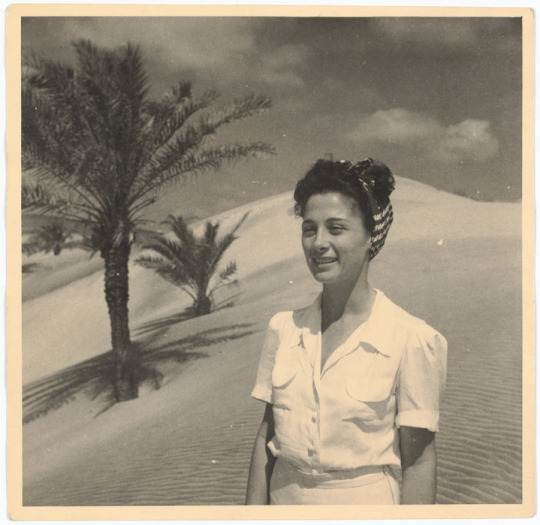
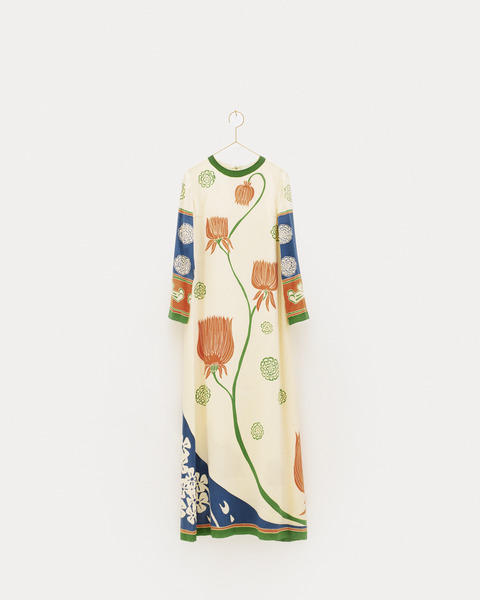
Mood of the moment: Gaby Aghion and the house of Chloé casts a new light on the label’s 70-year history with nearly 150 garments as well as never-before-exhibited sketches and documents from the Chloé Archive. Highlighting Aghion’s vision of effortless, luxurious fashion, and the work of iconic designers who began their careers with the brand, including Karl Lagerfeld, Stella McCartney, and Phoebe Philo, the exhibition showcases Aghion as a leader whose work altered the course of the global fashion industry in liberating women's bodies from the restrictive attitudes and styles of the time, as well as pioneering the emergence of luxury ready-to-wear. By capturing the mood of the moment, Aghion founded a fashion brand characterized by an easy elegance.
The exhibition will explore the ways in which each subsequent creative director after Aghion uniquely interpreted the Chloé ethos and echoed the needs of their time, from the development of ready-to-wear to embracing sustainable practices in fashion. This historical overview includes designs by Karl Lagerfeld (first hired by Aghion in 1964), Martine Sitbon, Stella McCartney, Phoebe Philo, Hannah MacGibbon, Clare Waight Keller, Natacha Ramsay-Levi, and Gabriela Hearst.
Mood of the moment: Gaby Aghion and the house of Chloé is organized by the Jewish Museum: Claudia Gould, Director Emerita and Exhibition Project Director; Choghakate Kazarian, Guest Curator; and Kristina Parsons, Leon Levy Assistant Curator. Exhibition design is by Elliott Barnes.
Support for the exhibition Mood of the moment: Gaby Aghion and the house of Chloé is provided by the Wilf Family Foundations, the Arnhold Family, the Peter Jay Sharp Exhibition Fund, an Anonymous donor, Wendy Fisher and the Kirsh Foundation in honor of Claudia Gould, the Goldie and David Blanksteen Foundation, the Estate of Gaby and Curtis Hereld, the Rita J. and Stanley H. Kaplan Family Foundation, Inc., Liz Lange and David Shapiro, The Feshbach Family, the Liane Ginsberg Family Fund, Michèle Gerber Klein, Ann and Mel Schaffer, John Simoudis and Jerry Rose, the Alfred J. Grunebaum & Ruth Grunebaum Sondheimer Memorial Fund, and other generous donors. Additional support is provided by CHLOÉ.
The publication has been supported by CHLOÉ and the Jewish Museum.
Both the publication and the exhibition feature garments from the CHLOÉ Archive collection.
5 notes
·
View notes
Text
Custom Clothing Manufacturers: Crafting Your Vision Into Reality
When it comes to creating your own clothing brand, partnering with a trusted custom clothing manufacturer is key to bringing your ideas to life. Custom clothing manufacturers specialize in transforming designs, ideas, and inspirations into tangible products, whether you're launching a small line or scaling up for a larger collection. These manufacturers work closely with designers, businesses, and entrepreneurs to produce high-quality, unique garments that reflect the brand's vision and values.
The process begins with understanding the design specifications, fabric preferences, and any special requirements for the garments. A reputable custom manufacturer will guide you through each stage of the process, ensuring that every detail is taken into consideration, from product conception to the final product. Whether you're looking to create activewear, casual clothing, swimwear, or high-end fashion, working with an experienced manufacturer ensures that your garments meet your exact specifications.
Key Factors to Consider When Choosing a Custom Clothing Manufacturer:
Quality Materials: A reputable manufacturer will offer a wide range of fabric options, including eco-friendly materials such as organic cotton, bamboo, and recycled fabrics, to help you meet the demands of sustainability.
Customization: Custom clothing manufacturers allow for a high degree of customization, from the fabric choice to the style, fit, and finishes. This ensures that your brand stands out in a crowded marketplace.
Experience: Experienced manufacturers understand the intricacies of garment production, ensuring that the final product is of the highest quality and meets your brand’s expectations.
Sustainability: Many manufacturers today prioritize sustainable production practices, offering eco-friendly options that align with your brand’s values.
Lead Times and Pricing: Be sure to discuss timelines and pricing with your manufacturer to ensure that both meet your expectations and fit your business model.
A Guide to Custom Clothing Manufacturers
Custom clothing manufacturers play a pivotal role in bringing your fashion ideas to life. Whether you're looking to launch a new clothing brand, expand your product line, or create unique garments for a special occasion, finding the right manufacturer is essential to ensuring the success of your project.
Here’s a guide to help you understand the key services and benefits provided by custom clothing manufacturers:
Custom Designs: Manufacturers work closely with you to create unique clothing pieces tailored to your brand’s vision, from conceptualization to final sample production.
Fabric Selection: A wide variety of fabric options is available to meet different needs, from eco-friendly materials like organic cotton and bamboo to premium fabrics like silk and merino wool. Your manufacturer will help select fabrics that align with your brand values and the desired look and feel.
Small to Large Orders: Whether you're a startup or an established business, many custom clothing manufacturers can accommodate orders of varying sizes, with flexible minimum order quantities (MOQs) that suit your business needs.
Design Customization: In addition to fabric choices, manufacturers often offer customization options such as embroidery, screen printing, and stitching to reflect your brand’s identity.
Quality Assurance: Custom clothing manufacturers implement strict quality control measures to ensure that your products meet the highest standards, ensuring perfect fit, durability, and aesthetics.
Timely Delivery: Experienced manufacturers will keep your production on schedule, providing accurate lead times and reliable shipping methods to meet your deadlines.
--------------------------------------------------------------------------
If you're looking for a reliable and experienced clothing manufacturer, Ro and Ritzy Apparel offers high-quality production services with a focus on sustainable materials and custom designs. We specialize in producing a range of clothing, including swimwear, activewear, and casual wear, with an emphasis on eco-friendly fabrics and superior craftsmanship. Our flexible approach allows us to work with businesses of all sizes, providing tailored solutions that meet your unique requirements.
For more information on Clothing manufacturers in uk contact us anytime
Ro and Ritzy Apparel
128 City Rd, London EC1V 2NX, United Kingdom
#Custom clothing manufacturers#Clothing production#Apparel manufacturing#Custom garment production#Sustainable clothing manufacturers#Organic fabric manufacturers#Clothing production services#Private label clothing#Activewear manufacturers#Swimwear manufacturers#Custom t-shirts manufacturing#Fashion garment manufacturing#Bulk clothing manufacturers#Fashion design and manufacturing#Wholesale clothing manufacturers#Custom clothing production#Clothing manufacturing companies#Eco-friendly fabric manufacturers#Apparel manufacturing services#OEM clothing manufacturers
0 notes
Note
Thank you for your answer, so do you think that sustainability is/can be an actual thing? I don’t ask to be “that one friend that’s too woke” or anything. But I’m genuinely curious. Like so many workers are exploited especially in the garment/fashion/textile industry. And simply buying “sustainably” won’t necessarily fix that? I mean wouldn’t the only way to be truly sustainable especially under our economic empire in the west (USA) would be to simply not buy clothes at all or at least buy vintage? Especially learning that even if exploited workers didn’t happen then we would still deal with the environmental impact of what it takes to make textiles (the excess water, energy, chemicals, and resources) . But tbh I have no research to back this up, but I wouldn’t be surprised if exploited workers and the “unethical” ways textiles are produced went hand in hand. Anyways thank you for bringing that conversation up for me. I’m always excited to learn more, I also don’t mean to come off as ignorant, I’m just genuinely curious
“Sustainability” can only mean so much under capitalism, and most companies just stamp it on as a marketing tactic. There’s no standard for what that label actually means (kind of like “clean” beauty, another example).
But yes there are better ways to consume than others. I think conscious people should try to move away from fast fashion as much as possible. That can mean buying second-hand, buying from better companies than SHEIN for example, and not tossing out clothes after every trend cycle.
However we cannot consume our way out of environmental destruction and capitalist exploitation. These are built into the system, so in order to truly address climate change and widespread abuse we’d have to make radical transformations (into socialism!).
You don’t come off as ignorant at all btw :) no one is born a seasoned Marxist, and no one is an expert. We’re all learning!
3 notes
·
View notes
Text
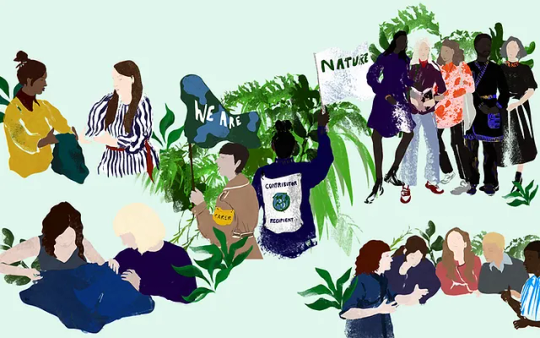
Sustainable Fashion: A Guide to Ethical Choices Sustainable Fashion: A Guide to Ethical Choices
In today's world, conscious consumerism is on the rise. People are increasingly aware of the impact their choices have on the environment and society. This shift has also extended to the fashion industry, leading to a growing demand for sustainable and ethical clothing.
What is Sustainable Fashion?
Sustainable fashion refers to clothing and accessories that are produced in a way that minimizes environmental impact and ensures fair labor practices. It encompasses everything from the choice of materials to the manufacturing processes and the overall lifecycle of a garment.
Why is Sustainable Fashion Important?
Environmental Impact: The fashion industry is one of the world's largest polluters. By choosing sustainable options, you can help reduce waste, conserve resources, and minimize carbon emissions.
Ethical Considerations: Sustainable fashion ensures that workers are treated fairly and that the production process does not exploit people or the planet.
Quality and Durability: Sustainable garments are often made with higher quality materials and better construction techniques, ensuring they last longer and reduce waste.
How to Choose Sustainable Fashion:
Research Brands: Look for brands that prioritize sustainability in their practices. Many brands now have certifications or labels that indicate their commitment to ethical and environmentally friendly production.
Consider Materials: Opt for natural fibers like organic cotton, linen, and bamboo, which are renewable and biodegradable. Avoid synthetic fabrics like polyester, which are derived from fossil fuels and can release harmful chemicals during production.
Check for Fair Trade Certifications: Fair Trade labels guarantee that the products were made under fair working conditions and that workers received a living wage.
Buy Less, Wear More: Invest in high-quality, timeless pieces that you can wear for years to come. Reduce impulse purchases and focus on building a sustainable wardrobe.
Support Secondhand and Vintage: Give pre-loved clothing a new life by shopping at thrift stores, consignment shops, or online marketplace

Sustainable Fashion Tips:
Wash Clothes Less Frequently: Excessive washing can contribute to the degradation of fabrics and release microplastics into the water.
Air Dry Clothes: Avoid using a dryer, which can shrink or damage garments and consume a lot of energy.
Repair and Mend: Instead of discarding damaged clothes, learn to repair or mend them to extend their lifespan.
Donate or Recycle: When you're ready to part with old clothes, donate them to charity or recycle them. Many clothing retailers now have recycling programs.
By making conscious choices and supporting sustainable fashion brands, you can contribute to a more ethical and environmentally friendly fashion industry. Together, we can create a future where style and sustainability go hand in hand.
3 notes
·
View notes
Note
Where does Scarlett get her dresses from?
"I love dresses"
Poet Scarlett quote from Nasty Nostalgia interview-August 10, 2020
Your style is something out of another era. How would you describe your personal style and aesthetic? Do you have favorite places to shop in London? Who are some of your favorite designers?
"Well, most of my clothes are second hand, either charity shops or vintage clothes fairs. I like second hand clothes because it's like they find you. I would rather wear something I have and love and have worn constantly than something new for the sake of it. I really like Paul Smith, he is still an independent fashion house 50 years after starting his business. He has such a fast moving and creative mind. I did a few readings last year and wore a blue suit he had given me. I really loved wearing the suit, it's strong and structured, you feel powerful and you sit differently. I also really like a new young designer called Nicole Eymard, her label is called Nichloris, it's an independent Demi-couture womenswear label. She was raised in California and studied in Paris, and is now based in London. Her clothes are sustainable and made here in the U.K using local manufactures and artisans fusing traditional craftsmanship with modern artistry. She creates very feminine dresses and shirts. I adore her silk slip dresses. Nature and ancient mythology are woven into her garments and that gives them a strength as well as being flattering and feminine. I love dresses. Jimmy's best friend of over 50 years is an antique dealer called Paul Reeves, he's the most wonderful man and I feel blessed to now have him in my life too. We were visiting Paul one weekend and I saw this incredible long red Victorian coat, it was made in 1870, I really didn't think it would fit but it was a perfect fit. That’s an incredible thing to have, and I've worn it for some poetry readings, I wore it when I read at Wellesley College."
If you could raid anyone’s wardrobe who would It be?
"No one. I like what I've got. But I enjoy seeing another woman being true to herself, looking beautiful and confident. I think beauty and elegance has so much to do with a person's spirit and character, there is strength and beauty in a woman that has overcome adversity."
Here she is at a vintage clothing fair here.
Her Zoreh cover has a very 1970's Gunne Sax style to it.
Lately she has been favoring new slip dresses. One she has is here (Link to dress is broken but from that maker.)
She always looks lovely.
I wonder if she owns a pair of jeans?
5 notes
·
View notes
Text

The Rising Cost of Luxury Menswear Decoding Ralph Lauren Purple Label’s Rising Costs
I want to dive into something that's been on my mind and likely yours too: the rising cost of luxury menswear. It's no secret that dressing well has always come at a price, but lately, that price seems to be climbing higher than ever. And who better to use as a prime example than Ralph Lauren's Purple Label?
Ralph Lauren has long been synonymous with American luxury and sophistication. The Purple Label, in particular, stands as the pinnacle of the brand's craftsmanship and elegance. But have you noticed how the price tags on these garments have been creeping up year after year? Let's explore why this is happening.
Craftsmanship and Quality First and foremost, the craftsmanship and quality of Ralph Lauren Purple Label are second to none. Each piece is meticulously crafted, often by hand, using the finest materials available. From the softest Italian cashmere to the most luxurious wool, these fabrics don't come cheap. And let's not forget the attention to detail – hand-stitched seams, bespoke tailoring, and unique designs all contribute to the final cost. Quality like this demands a premium, and as the demand for these high-quality materials increases, so do the prices.
Inflation and Economic Factors Next up, let's talk about the broader economic factors at play. Inflation is a key player in the rising costs of luxury goods. The cost of raw materials, labor, and shipping has been steadily increasing over the years. As these costs rise, so does the final price of the garments. Additionally, global economic fluctuations, such as changes in currency exchange rates and trade tariffs, can impact the cost of producing and importing luxury items.
Exclusivity and Brand Positioning Luxury brands like Ralph Lauren also rely heavily on the concept of exclusivity. By keeping their prices high, they maintain an air of exclusivity and prestige around their products. It's a strategic move – if everyone could afford Purple Label, it would lose its elite status. By raising prices, Ralph Lauren ensures that their most luxurious line remains a symbol of wealth and success.
Sustainability and Ethical Practices In recent years, there's been a significant shift towards sustainability and ethical practices in fashion. Ralph Lauren has committed to more sustainable and ethical practices, which often come with higher costs. Sourcing sustainable materials, ensuring fair labor practices, and reducing environmental impact all contribute to the overall cost of production. While these initiatives are commendable and necessary, they do result in higher prices for the end consumer.
The Luxury Experience Finally, let's not overlook the luxury experience that comes with purchasing Ralph Lauren Purple Label. When you buy from the Purple Label, you're not just buying a piece of clothing – you're investing in an experience. The personalized service, the exquisite packaging, and the sense of belonging to an exclusive club all add to the perceived value. This experiential aspect of luxury shopping justifies a higher price point.
Conclusion So there you have it – the rising cost of luxury menswear, exemplified by Ralph Lauren's Purple Label, is a complex interplay of quality, economic factors, exclusivity, sustainability, and the luxury experience. While the prices may be daunting, understanding the reasons behind them can help us appreciate the true value of these exquisite garments.
Keep Curating
#articles#Menswear#LuxuryFashion#RalphLauren#PurpleLabel#FashionEconomics#HighEndFashion#MensFashion#LuxuryMenswear#SustainableFashion#FashionTrends#Exclusivity#FashionQuality#Craftsmanship#LuxuryLifestyle#FashionInsights
3 notes
·
View notes
Text
Sustainability in clothing industry falters as fast fashion reigns
Textile waste is an urgent global problem, with only 12% recycled worldwide, according to fashion sustainability nonprofit Ellen MacArthur Foundation. Even less — only 1% — are castoff clothes recycled into new garments; the majority is used for low-value items like insulation or mattress stuffing.
Nowhere is the problem more pressing than in China, the world’s largest textile producer and consumer, where more than 26 million tons of clothes are thrown away each year, according to government statistics. Most of it ends up in landfills.
And factories like this one are barely making a dent in a country whose clothing industry is dominated by “fast fashion” — cheap clothes made from unrecyclable synthetics, not cotton. Produced from petrochemicals that contribute to climate change, air and water pollution, synthetics account for 70% of domestic clothing sales in China.
According to a report this year from independent fashion watchdog Remake assessing major clothing companies on their environmental, human rights and equitability practices, there’s little accountability among the best-known brands.
The group gave Shein, whose online marketplace groups about 6,000 Chinese clothing factories under its label, just 6 out of a possible 150 points. Temu scored zero.
Also getting zero were U.S. label SKIMS, co-founded by Kim Kardashian, and low-price brand Fashion Nova. U.S. retailer Everlane was the highest-scorer at 40 points, with only half of those for sustainability practices.
“Studies repeatedly show consumers are not willing to pay higher for clothing made from recycled materials, and instead they actually expect a lower price because they see such clothing as made of secondhand stuff,” he said.
With higher costs in acquiring, sorting and processing used garments, he doesn’t see sustainable fashion succeeding on a wide scale in China, where clothes are so cheap to make.
2 notes
·
View notes